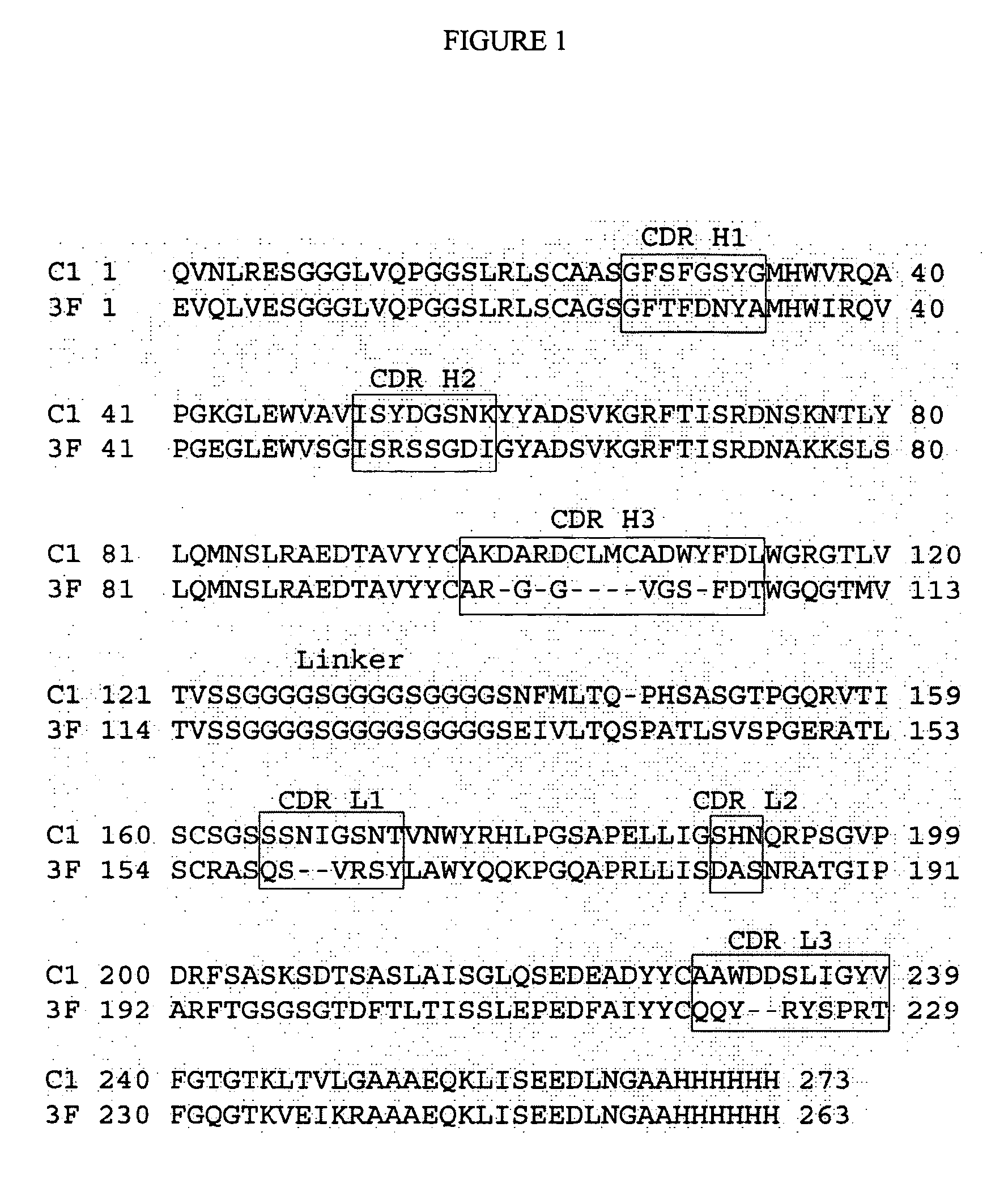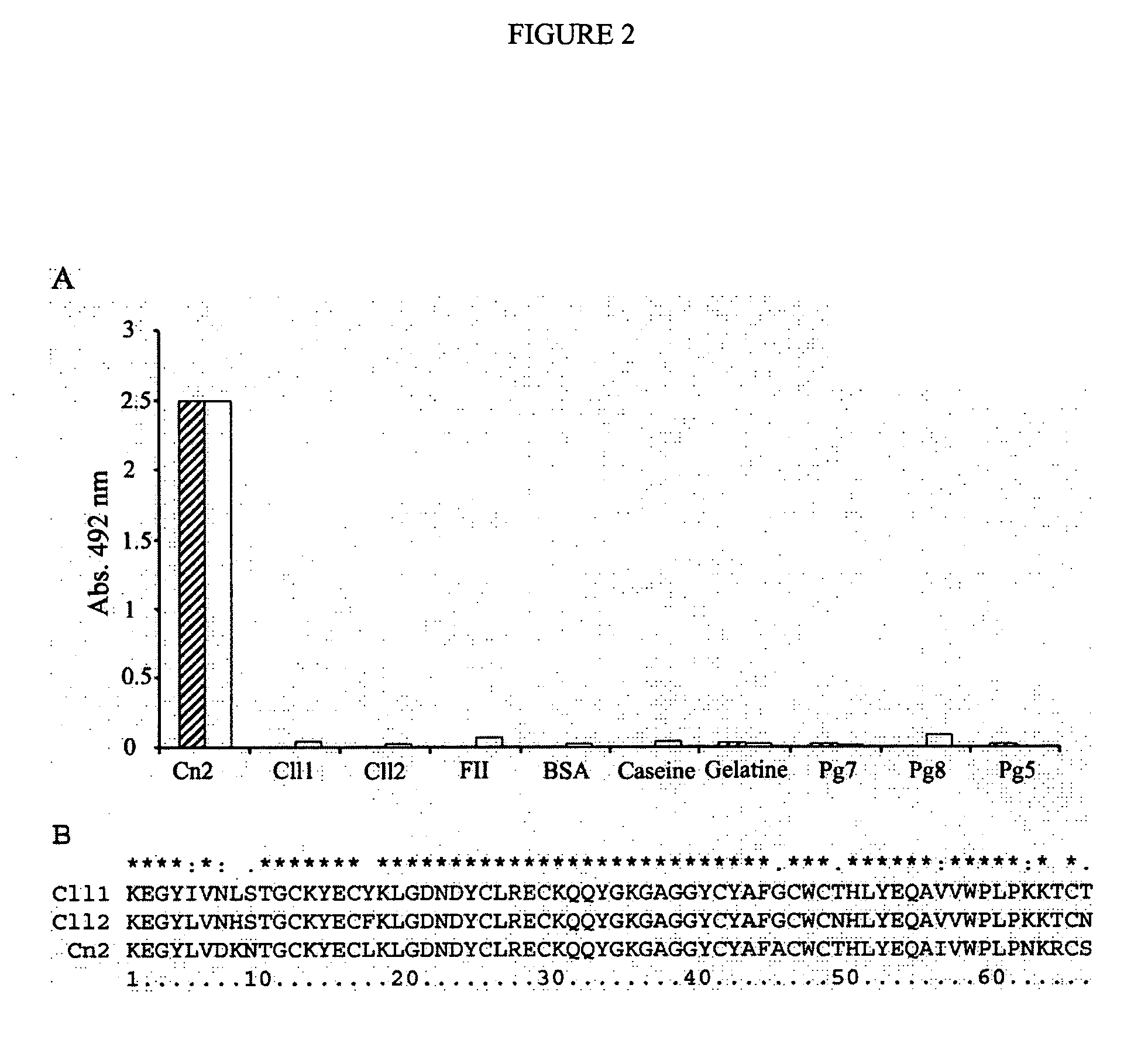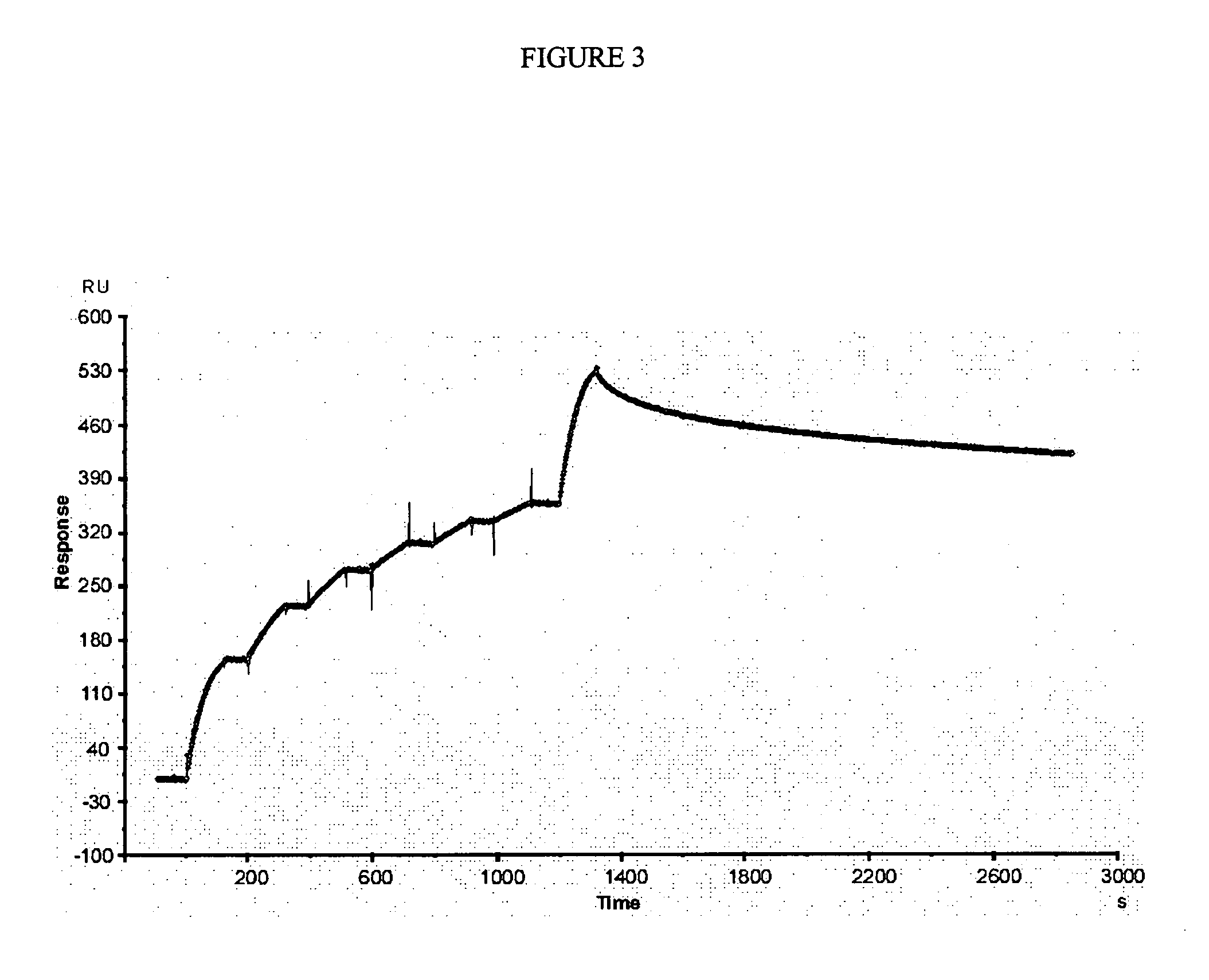Human antibody variants that specifically recognize the toxin CN2 from Centruroides noxius scorpion venom
a technology of human antibody and toxin, which is applied in the field of antibody variants, can solve the problem of uneven distribution of variable domains of antibodies, and achieve the effect of reducing the number of antibodies
- Summary
- Abstract
- Description
- Claims
- Application Information
AI Technical Summary
Benefits of technology
Problems solved by technology
Method used
Image
Examples
example 1
Construction of the Library of Human scFv
[0107] A human non-immune scFv library was prepared from a sample of 400 ml of peripheral blood lymphocytes provided by a Centruroides limpidus limpidus scorpion collector. Blood was centrifuged in a Ficoll gradient and lymphocytes were separated and washed. Total RNA was isolated and purified by Promega KIT. The cDNA was synthesized from total RNA by RT-PCR using random hexamers [Roche RT-PCR Kit (AMV), Indianapolis, Ind., USA]. Variable domain repertoires of immunoglobulin heavy chains were amplified from the cDNA by Vent DNA polymerase (New England Biolabs) in combination with each of the HuVHFOR primers and an equimolar mixture of HUJHBACK primers (Marks, J. D., Hoogenboom, H. R., Bonnert, T. P., McCafferty, J., Griffiths, A. D. & Winter, G. (1991) J Mol Biol 222, 581-97) in independent reactions for each family. For light chain variable domains, a similar procedure was performed using each HuVκFOR and a mixture of HuJκBACK for K chains ...
example 2
Isolation of anti-Cn2 scFv by Panning of Phage Antibody Repertories
[0108] The library of human scFv was displayed on filamentous phage by inducing the cell culture with Helper (M13K07 (New England Biolabs, Benerly, Mass. USA) and used for the selection of antibodies against Cn2 toxin. Biopanning was performed as described in methods. After four rounds of panning, 88 single phage-antibody clones were randomly picked, cultured and screened for specific binding to Cn2 by ELISA. High binding polystyrene ELISA plates (Corning, N.Y., USA) were coated O / N with 0.3 μg of toxin Cn2 (100 μl / well) in bicarbonate buffer 50 mM pH 9.4 at 4° C. Plates were washed thrice with PBS and Tween 0.1%, then blocked with BSA 0.5% in PBS for 2 h at 37° C. Phage-antibody supernatants were added to each well, incubated for 1 h at 37° C. and the plates washed. Bound phage-antibodies were detected with horseradish peroxidase (HRP)-conjugated anti-M13 antibody (Amersham Pharmacia Biotech AB). HRP activity was d...
example 3
First Cycle of Maturation
[0110] In the first cycle of maturation, clone 3F was used as parent antibody subjected to directed evolution by error prone PCR as described in methods. A library of 1×106 variants (mutation rate 0.9%), obtained from scFv 3F was evaluated by phage display against Cn2 toxin. The variant 6F was selected, which had a change (Ser54Gly), at CDR2 of heavy chain. The kinetic constants of this mutant (Table 1), showed that the association and dissociation constants were improved approximately 7 fold and 1.5 fold respectively, resulting in an increment of one order of magnitude in the KD(from 183 nM to 16.8 nM; Table 1). These results show that scFv 6F binds more efficiently to the toxin but it still detaches rapidly, indicating that residue at position 54 plays an important role in the interaction of the antibody with the toxin Cn2.
PUM
| Property | Measurement | Unit |
|---|---|---|
| Temperature | aaaaa | aaaaa |
| Fraction | aaaaa | aaaaa |
| Time | aaaaa | aaaaa |
Abstract
Description
Claims
Application Information
 Login to View More
Login to View More - R&D
- Intellectual Property
- Life Sciences
- Materials
- Tech Scout
- Unparalleled Data Quality
- Higher Quality Content
- 60% Fewer Hallucinations
Browse by: Latest US Patents, China's latest patents, Technical Efficacy Thesaurus, Application Domain, Technology Topic, Popular Technical Reports.
© 2025 PatSnap. All rights reserved.Legal|Privacy policy|Modern Slavery Act Transparency Statement|Sitemap|About US| Contact US: help@patsnap.com



